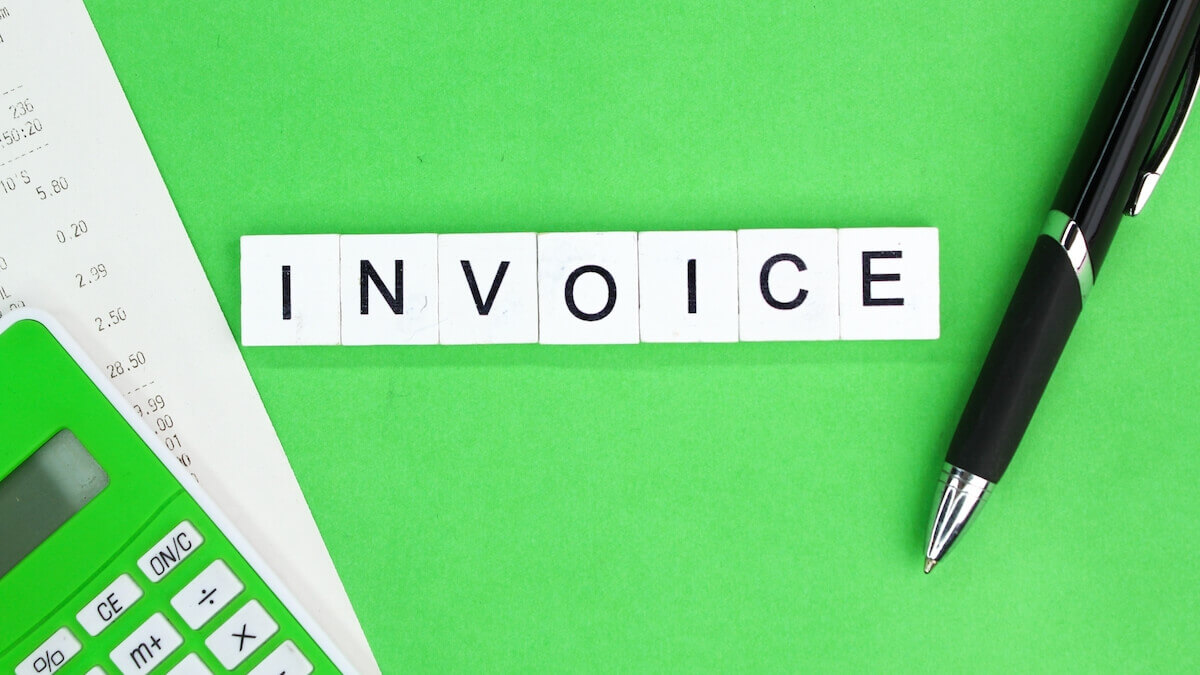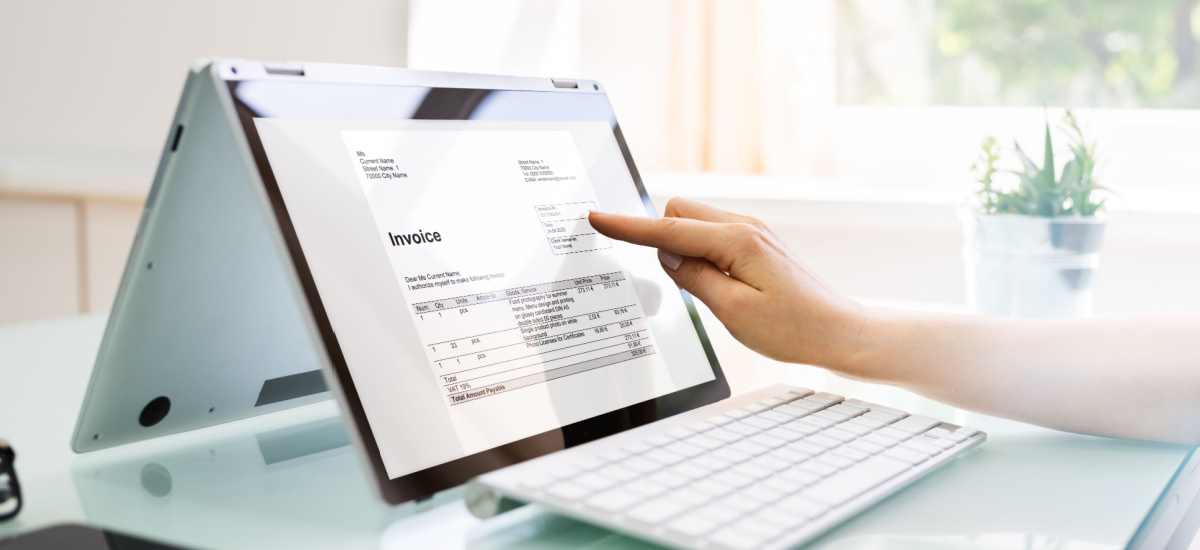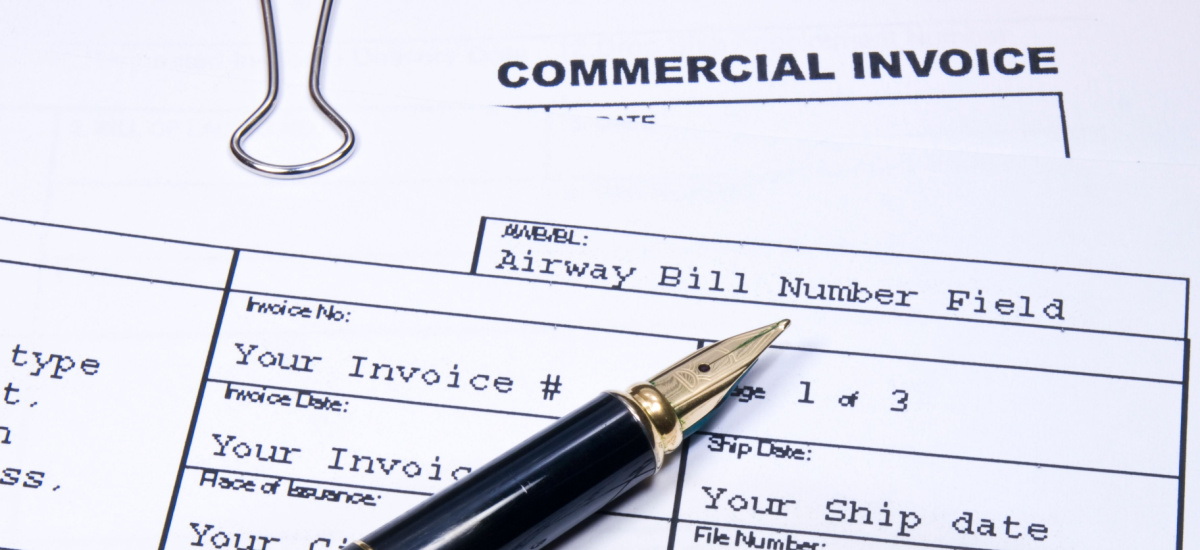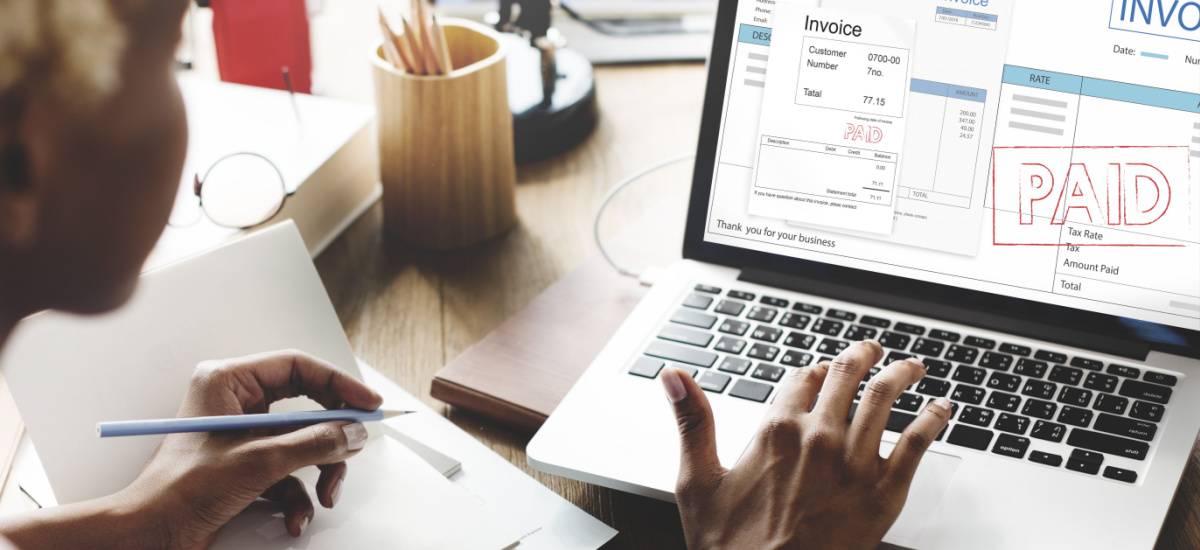Hiring Independent Contractors in Brazil: Legal Guide for 2026
Learn how to hire independent contractors in Brazil. Understand tax rules, compliance, contracts, and how to avoid misclassification risks.

If you run a business, then invoicing will be an everyday task. From small businesses to large enterprises, getting the invoicing process right can make a big difference in getting paid on time.
This complete guide to invoices will help you in creating, sending, and managing invoices correctly. You can dive into each link to get more information, too.
| 🔍 Read on to find out about: | |
|---|---|
| 💡 You can also find tips on how to receive international invoice payments and save money with Wise Business, the smart online alternative to traditional banks. |
|---|
A basic invoice is an itemized list of services provided or goods shipped, the price, and the terms of sale. It’s sent from a business to a customer or supplier, demonstrating an obligation to pay for those goods or services.
An invoice usually includes three main items:
Invoices play an essential role in business accounting. They inform customers what they owe, and also help to track sales and inventory, do sales forecasting, and keep tax records. All of these things are crucial to keeping your business in good standing.
Read the full guide to find all the details of what an invoice is, and what to use invoices for.
An e-invoice is defined as “the interchange and storage of legally valid invoices in electronic format only between trading partners.”
E-invoices are digital but hold the same legal significance as paper invoices. They can prove compliance or even act as tax originals. An e-invoice should be compliant, clearly state the goods or services received, and be executable based on the invoice payment terms.
The full article covers what an electronic invoice is, and what you need to know about e-invoicing.

It's important to pay close attention to detail when writing an invoice, as errors can lead to wasted time and delayed payments.
This article outlines the key steps to follow when writing an invoice.
There are several different ways you can create an invoice as an independent contractor. You can find these methods in the full article. Whichever you choose, some key details to include on an independent contractor invoice are:
There are also some things to avoid when writing invoices as an independent contractor. Find out more in our detailed guide.
| 💡 One of the key ways for smaller businesses to speed up the process of writing invoices is to find an invoice template online. Luckily, Wise has some free invoice templates or a free invoicing tool to generate and send invoices with ease. |
|---|
You can find the invoice number at the top of an invoice. This number is useful for both the issuing business and the recipient. A unique invoice number allows for the identification of each invoice to confirm payments have been made correctly.
The type of invoice numbering system used will vary from one business to the next. The main rule to follow is that your invoice numbers need to follow a sequence.
1. Choose a numbering system
2. Follow invoice numbering best practices
3. Try invoice software to make the process easier
This guide will show you how to number invoices correctly, with examples and tips on how to get it right.
Invoice payment terms are the conditions under which a buyer agrees to pay for goods or services that have been provided by a seller. The payment terms are usually outlined in the invoice.
These terms typically include the due date for payment, the payment method, and any applicable discounts or penalties for early or late payment.
The payment terms are important for both the buyer and the seller to understand and agree upon, as they can affect cash flow, creditworthiness, and business relationships.
This clear guide will go through each payment term, and when to use each one.

Sending an invoice correctly will help you to get paid on time. This means not only ensuring that the details on the invoice are correct, but also choosing the best method to send the invoice.
There are three main ways to send an invoice:
How to send an invoice using each of these three methods is covered in detail in the article. You’ll also find information on when to send invoices, and tips for getting invoices paid on time.
Shopify is an online platform that enables ecommerce businesses to create their store and start selling products online.
One of the most important questions you might have when getting started on Shopify is how to send an invoice on the platform.
To create and send an invoice as a Shopify Partner, you’ll need to do the following:
|
|---|
For more detailed steps, you can check the full article on how to send an invoice on Shopify.
A proforma invoice is a document that is similar to a regular invoice, but is used to provide an estimate or quotation to a buyer for goods or services that are yet to be provided.
The purpose of a proforma invoice is to provide the buyer with an idea of what the final invoice will look like and how much it will cost, so that they can make an informed decision about whether to proceed with the transaction.
Read our detailed guide to find out more about what proforma invoices are, whether they are legally binding, and cases in which to use them.
A shipping invoice is a document used in commercial transactions that includes details about the shipment of goods. This type of invoice is typically issued by a supplier or vendor to a buyer to request payment for the goods that have been shipped.
The shipping invoice provides a detailed breakdown of the goods shipped, the shipping costs, and any other fees or charges associated with the shipment. It helps to ensure that both parties have a clear understanding of the terms of the transaction.
Read the full article to learn more about shipping invoices, and when to use them.
The Canadian Customs Invoice (CCI) is a document required for shipments entering Canada from other countries. It’s used by Canadian customs officials to assess and collect duties and taxes on imported goods.
The Canadian Customs Invoice includes details such as the name and address of the buyer and seller, a description of the goods being shipped, the quantity and value of the goods, and the terms of the sale, including the method of payment.
To find out how to fill out the Canadian customs invoice, and information on the process, read the full guide.

A supplier invoice (or vendor invoice) is a document sent by a vendor or supplier to a buyer requesting payment for goods or services that the business has provided.
These types of invoices are crucial for businesses because they track money that the business owes to its suppliers. Without supplier invoices, it would be hard to keep track of expenses or payments, which can cause damage to your relationships with suppliers.
This full guide covers what a supplier invoice is, as well as what to include in them.
An invoice and a receipt are both important documents used in business transactions, but they serve different purposes.
An invoice is a document issued by a supplier or vendor to a buyer, requesting payment for goods or services that have been provided or will be provided in the future.
On the other hand, a receipt is a document issued by a seller or vendor to a buyer, acknowledging that payment has been made for goods or services that have been delivered.
To find out all the differences that you should be aware of, you can read the full article.
A purchase order and an invoice are both important documents used in business transactions, but they serve different purposes.
A purchase order is a document issued by a buyer to a supplier or vendor, indicating the products or services that the buyer intends to purchase.
An invoice, on the other hand, is a document issued by a supplier or vendor to a buyer, requesting payment for goods or services that have already been provided.
This guide will help clear up the differences between the two, and which cases to use each one.
Recurring invoices are a convenient and efficient way to manage ongoing transactions and ensure timely payment for services or products provided on an ongoing basis. They eliminate the need to manually generate and send invoices each time a payment is due.
A recurring invoice is an automated invoice that is generated and sent to a customer on a regular basis, such as weekly, monthly, or annually. Ongoing services or subscription-based products, such as software subscriptions, will typically use recurring invoices.
Discover what a recurring invoice is and how it could save your business time in the full article.
An open invoice is an invoice that has been sent but not yet paid. An open invoice is also known as an outstanding invoice.
You can read the full article to dive into what an open invoice is, the risks of open invoices, and how to close them.
When it comes to commercial invoices, the information included can vary depending on your needs. You should include information about the product being imported, information about the seller, as well as the necessary information about the importer or buyer.
Take a look at these three main parts of commercial invoices, as well as a commercial invoice example in the full article.

Invoice processing is the procedure by which a business handles and manages the invoices it receives from suppliers or vendors. The process typically involves several steps, including receipt, review, approval, and payment.
The goal of invoice processing is to ensure that all invoices are accurate, approved, and paid on time while minimizing the risk of errors, fraud, or duplication. Implementing streamlined solutions can make this process faster.
This article will help you understand what invoice processing is, and see which processes could save your business time and money.
Invoicing software is a program that automates the process of creating and sending invoices. It can be used by businesses of all sizes to manage customer information, track payments, and create customized invoices.
Invoicing software offers benefits such as increased accuracy, improved efficiency, and reduced administrative costs, and may include features like automated payment reminders, accounting software integration, and online payment acceptance.
Here’s a list of some of the options:
- Freshbooks
- Wave
- Xero
- QuickBooks
- Zoho
- Square
You can read more about each one in this article, and see which one may suit your business.
An invoice app allows you to access and send invoices wherever you are. An invoicing app is similar to invoicing software in that it helps to facilitate the invoicing process.
It's a dedicated program that helps to manage accounts receivables, create invoices, and send invoices to your customers - all from your mobile device.
Here are some of the top invoice apps out there:
- QuickBooks Online mobile app
- FreshBooks app
- Zoho Invoice app
- Invoicely app
- Wave Invoicing
- InvoiceNinja app
- Invoice Simple
- Xero app
- Agiled app
- Hurdlr Pro app
This detailed guide covers each option, so you can see which could be best for your business.
| 🔍 Want to learn more about accounting software? You can also read these guides: | |
|---|---|

Whether you run a business or fly solo, invoice payments can cause headaches. Especially when it comes to international invoices.
There may be a discrepancy between the sum of money listed and what you thought you had to pay. This can be due to the conversion rates used. The invoice payment method you choose can also make a difference in fees, speed, and practicality.
This article will cover how to pay domestic and international invoices on time, using different methods. You can also find some tips on how to get a customer to pay an invoice.
A billing cycle is the period of time that passes between sending one invoice, and sending the next. A typical use for setting a billing cycle is when your business offers a repetitive service.
The length of a billing cycle is not fixed and can vary between companies. While many companies use a monthly or 30-day billing cycle, the standard range is typically between 20 and 45 days. However, different companies may have their own billing cycle, such as a 28-day period or a calendar month.
The full article will cover the different billing cycle types, and how to set a billing cycle for your business.

Late fees can encourage on-time payments. They are often included in the ‘terms’ section of an invoice, and they detail when late fees are applied and the amount.
A simple example late fee phrase could be:
“Invoice payment is due within 30 days. Please be advised that we will charge 1% interest per month on late invoices.”
If the customer doesn’t pay, you can then follow up with a late fee letter. The late fee letter should be polite, accurate, informative, and based on the terms of the original invoice.
The full article will cover what to include in your late fee letter, including how much you can charge and top tips on how to deal with late payments.
An invoice is past due when the invoice payment is late. Once an invoice is past due, you should inform the customer of the overdue payment. If your business has late payment fees for past due invoices, then you can also include these fees in the payment request.
Example of a first past due payment letter:
Dear Customer,
This is a friendly reminder that we have yet to receive payment on our last invoice. The invoice dated XXX, with reference number XXX, was due on XXX.
You can find a copy of the original invoice attached. Please let us know when we can expect payment.
Kind Regards.
But, the process might not stop there. You could have to spend more time trying to collect your payments.
Read this article to discover some useful tips on collecting past due invoices.
| 💡 Sending your invoice correctly can help avoid late invoice payments. Try the free invoice templates & invoice generator from Wise: |
|---|
PayPal invoicing is a service designed for merchants invoicing their customers and clients. You can create, customize, and send invoices on PayPal as a business user. Sending and managing PayPal invoices is free, but it's worth knowing that there is a charge for getting paid online.¹
This guide to PayPal invoices will help you get started.
PayPal charges a fee for business owners to receive invoice payments. There is a percentage-based fee for collecting invoice payments to your PayPal account, as well as a flat rate per transaction.²
If the payment is from another country, or if currency conversion is involved, then these also incur additional percentage-based fees. These come on top of the original fee for receiving the invoice payment.³
You can find a breakdown of all the fees, as well as some tips on how to save money, in the full article.
There can be more factors to consider when invoicing international clients rather than local ones. The details you add to the invoice can play a big factor to getting paid on time.
It's essential to consider which currency you'd like to get paid in, how you'll send the invoice, and which invoice payment terms to use - among other things.
This clear guide will help businesses who need to invoice international clients.
Collecting past due invoices can be even more complex when they are from international customers. There are more factors to consider, such as the exchange rates, and differences in late payment fee regulations.
The best place to start is checking the original payment terms and making sure they were clear. If so, then sending a past due invoice letter is the next step. It can also be worth getting in touch with the customer via phone or email to check if there is a reason for the late payment.
This guide will go through how to collect overdue payments from overseas customers in a professional and effective way.
Mastering how to prepare, send, and manage invoices will help your business get paid on time. After reading this complete guide, you'll now be armed with knowledge of invoice types, how to use them, and how to get your customers to pay invoices on time. You'll also have some handy free invoice templates to create professional invoices.
However you choose to invoice your customers, making it easier for them to pay will play a big part in getting paid on time.
Invoicing international customers can add another layer of complexity due to different currencies and payment methods. Wise Business can help with this.
Allowing payment in local currency is an excellent way to make payment easier and faster. Wise Business makes it possible to have 9 local account details, such as a UK account number and sort code - even as a US resident.
Wise is a safe banking alternative used by over 300k businesses of all sizes each quarter. You don’t need to open several costly international accounts. All your currencies are held in one easy-to-manage account.
Get started with Wise Business today:
Easy to set up, easy to use
As a company dealing with international transactions each day, Wise understands the needs and pain points of international businesses. The Wise Business account is here to make life easier when doing business overseas and at home. Join today and see how much time and money you can save.
Sources:
All sources checked May 18, 2023.
*Please see terms of use and product availability for your region or visit Wise fees and pricing for the most up to date pricing and fee information.
This publication is provided for general information purposes and does not constitute legal, tax or other professional advice from Wise Payments Limited or its subsidiaries and its affiliates, and it is not intended as a substitute for obtaining advice from a financial advisor or any other professional.
We make no representations, warranties or guarantees, whether expressed or implied, that the content in the publication is accurate, complete or up to date.

Learn how to hire independent contractors in Brazil. Understand tax rules, compliance, contracts, and how to avoid misclassification risks.

Learn how to open a business bank account in Finland with this guide. Get essential info and steps for setting up your business finances.

Learn how to open a business bank account in Switzerland. Discover the essential steps to set up your business finances.

Learn how to open a business bank account in France. Get essential tips and steps for setting up your business finances.

Learn how to open a business bank account in Germany. This guide offers localized steps for setting up your business finances efficiently.

Discover the best client onboarding software to streamline your process, enhance client experience, and boost efficiency. Find your ideal solution today!